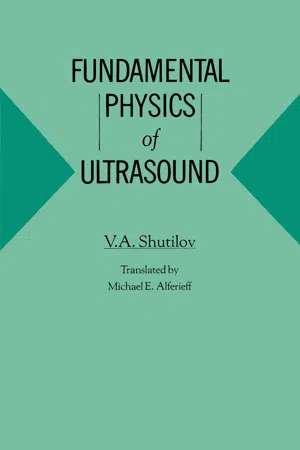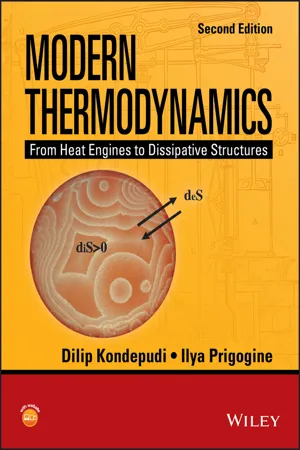Physics
Radiation Pressure
Radiation pressure is the pressure exerted upon any surface exposed to electromagnetic radiation. It is caused by the momentum transfer between the photons and the surface. This phenomenon is important in various fields of physics, including astrophysics, optics, and laser technology.
Written by Perlego with AI-assistance
Related key terms
Related key terms
1 of 4
Related key terms
1 of 3
4 Key excerpts on "Radiation Pressure"
- eBook - ePub
- R. W. Ditchburn(Author)
- 2013(Publication Date)
- Dover Publications(Publisher)
Although, under the conditions of laboratory experiments, the pressure of radiation is very small, it is very important in stars. The high radiation density in a star gives a large pressure tending to drive the matter outwards from the centre. This opposes the gravitational force which tends to make the star collapse. In a star the emission and absorption of radiation cause a rapid transfer of mass from one part of the star to another. Radiation coming from the centre and absorbed in the outer layers possesses less angular momentum than the matter which absorbs it. This tends to reduce the speed of rotation and increases the effective viscosity of the gas.17.21.—Let us now consider the Radiation Pressure of a parallel beam of light, incident normally on an absorbing body, from the point of view of the Einstein photon theory. Suppose that the light is of frequency v and that there are N quanta per unit volume. Then we must haveSince all quanta included in a cylinder of volume c cubic centimetres are incident upon unit area of the surface in one second, the pressure p is given bywhere P is the momentum of one photon. Combining 17(18) and 17(19) with 17(15) , we see that the experiments imply thatThe results obtained for the pressure on reflecting surfaces and for isotropic radiation are in agreement with the above hypothesis. 17.22. Wave Theory of Light Pressure.A beam of electromagnetic radiation sets up currents in the surface of a metal which partly absorbs and partly reflects the radiation. The action of the magnetic field of the radiation on these currents should be manifested as a force on the conductor which is carrying the currents. In a similar way the radiation sets up displacement currents in a dielectric medium which absorbs or reflects the light, and again the action of the magnetic field on the currents constitutes a “ pressure ”. It is possible to show by direct calculation that the magnitude of the pressure predicted is in agreement with experimental results.* - eBook - ePub
- Shutilov(Author)
- 2020(Publication Date)
- CRC Press(Publisher)
Since an obstacle distorts the ultrasonic field, radiation forces in this case are determined not only by the change in the momentum flux of the wave incident on the obstacle, but also by the momentum flux of the scattered wave. The problem of calculating the radiation forces acting on an obstacle thus includes the problem of diffraction of an acoustic wave by an obstacle. Radiation forces also depend on the reflective properties of an obstacle. For this reason, we shall calculate radiation forces in detail when we describe specific radiometric systems, in particular, systems used to measure the ultrasonic intensity. In this section we shall derive the general equations required for such calculations, and we shall study the case of a free ultrasonic field.So, the radiation force acting on some fixed surface of a volume singled out in a medium is determined by the momentum flux through this surface. The expression for the components of this force was presented in §II.2 . It has the form(V.1)F i= −∲ SΠi kn kd S ,wherenkare the vector components of the unit outer normal to the surface S . We are interested in the constant component of this force, which can be found by averaging expression (V.1) with respect to time, i.e.(V.2)F i= −∲ SΠ ¯i kn kd S .The Radiation Pressure is therefore determined by the time-averaged value of the “strain tensor” ∏ik (II.15) introduced in the same section:.=Π ¯i kp ¯δ+i kkp¯v ivThus, unlike the scalar hydrostatic or acoustic pressure, according to Eq. (V.2) the Radiation Pressure is a vector quantity: it depends on the orientation of the area dS relative to the direction of propagation of the ultrasonic wave. Because, however, the term “Radiation Pressure” is widely used in the literature, we shall retain it, though to avoid misunderstandings it would be better to speak about radiation stress or strain.We shall study, as we have done above, the case of plane waves propagating along the x - eBook - ePub
- A. C. Phillips(Author)
- 2013(Publication Date)
- Wiley(Publisher)
14 Pa. Thus, we were justified in Section 1.4 to neglect radiation and assume that the sun is primarily supported by the pressure generated by electrons and ions.However, it is easy to show that Radiation Pressure cannot be neglected in stars more massive than the sun. To do so, we recall from Eq. (1.11) that the thermal kinetic energy of a star in hydrostatic equilibrium is related to its gravitational potential energy. This implies that the typical internal temperatureTIin a star of mass M and radius R is approximately proportional to M /R . The electrons and ions have densities which are proportional to M /R 3 , and these particles supply a ‘gas’ pressure(2.47)In contrast, the Radiation Pressure is given by(2.48)Hence(2.49)Thus the ratio of the Radiation Pressure generated by photons to the ‘gas’ pressure generated by the electrons and ions increases with the mass of the star. This ratio is small for the sun. But we shall see in Chapter 5 that the Radiation Pressure becomes comparable with the ‘gas’ pressure if the mass of the star exceeds 50 . Furthermore, we recall that hydrostatic equilibrium of a self-gravitating system becomes precarious if the pressure of support is generated by ultra-relativistic particles. Hence Radiation Pressure is likely to have a destabilizing effect on massive stars.2.4 THE SAHA EQUATION
Molecules are dissociated, atoms are ionized and atomic nuclei are photodisintegrated by radiation. The underlying reaction mechanisms are complex and varied. However, simple and powerful results are readily derived if we assume that matter and radiation are in thermodynamic equilibrium. To illustrate the general ideas, we shall consider hydrogen in equilibrium with radiation and derive the Saha equation for the ionization of atomic hydrogen. - eBook - ePub
Modern Thermodynamics
From Heat Engines to Dissipative Structures
- Dilip Kondepudi, Ilya Prigogine(Authors)
- 2014(Publication Date)
- Wiley(Publisher)
It was clear, even from the classical electromagnetic theory, that a field which interacts with matter and imparts energy and momentum must itself carry energy and momentum. Classical expressions for the energy and momentum associated with the electromagnetic field can be found in texts on electromagnetic theory. For the purposes of understanding the thermodynamic aspects of radiation, we need an equation of state, i.e. an equation that gives the pressure exerted by thermal radiation and its relation to the temperature.Using classical electrodynamics it can be shown [1] that the pressure exerted by electromagnetic radiation is related to the energy density u by(11.2.1)This relation follows from purely mechanical considerations of force exerted by electromagnetic radiation when it is reflected by the walls of a container. Though it was originally derived using the classical electrodynamics, Equation (11.2.1 ) can be more easily derived by treating electromagnetic radiation filling a container as a gas of photons (shown in Box 11.2). We shall presently see that when this equation of state is combined with the equations of thermodynamics, we arrive at the conclusion that the energy density u(T, ν) (and hence I(T, ν)) is proportional to the fourth power of the temperature, a result that is credited to Joseph Stefan (1835–1893) and Ludwig Boltzmann (1844–1906) and called the Stefan–Boltzmann law. The fact that energy density of thermal radiation is only a function of temperature, independent of the volume, implies that in a volume V the total energy is(11.2.2)Though thermal radiation is a gas of photons, it has features that are different from that of an ideal gas. At a fixed temperature T
Index pages curate the most relevant extracts from our library of academic textbooks. They’ve been created using an in-house natural language model (NLM), each adding context and meaning to key research topics.
Explore more topic indexes
Explore more topic indexes
1 of 6
Explore more topic indexes
1 of 4



